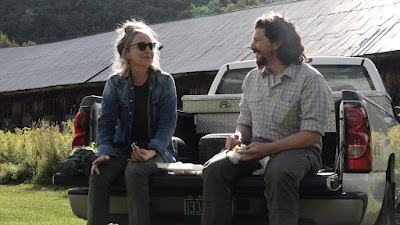10 Made For TV Christmas Movies To Watch This Holiday Season (by synopsis)
10. Christmas Unwrapped. “An ambitious yet pragmatic reporter learns the true meaning of Christmas when she investigates a millionaire and beloved member of the town who insists that all the gifts that arrive on Christmas every year are from none other than Santa himself.” LET’S GO!!!!!
9. If I Only Had Christmas: “At Christmas, a cheerful publicist teams up with a cynical VP and his eclectic team to help a charity in need.” A synopsis that does not look like much at first but sneaks up on you by checking all the pertinent Hallmark Countdown to Christmas boxes. It leads off with that wholly unnecessary “At Christmas” – you don’t say? – and then proffers the proper stereotypes - a cheerful female lead, a cynical male lead - while rounding it off with an eclectic supporting cast and a charity to ensure we understand the season is about giving, not receiving.
8. Beaus of Holly. (Ion). “When Holly boldly proposes to Phil, he confesses he needs to first work things out with a long-ago ex. Having booked a romantic holiday sleigh ride, despondent Holly pours her heart out to sleigh driver, Jake, who takes a refreshing interest in her, until Phil returns.” Two puns in one title is excessive and bumps it down the list. Still, I’m including it because that sleigh variation of a Meet Cute in, like, the back of a taxi is pretty inspired.
8. A Christmas Movie Christmas (UP): “Eve and her cynical sister Lacy find themselves trapped inside a Christmas movie where they are the stars.” How had this movie not happened yet?
7. Christmas Waltz: “A woman makes an unexpected connection with her dance instructor after her storybook Christmas wedding is canceled.” Is it really so unexpected?
6. Cranberry Christmas. “A separated couple plays pretend, using their ‘perfect marriage’ to give their town’s Christmas festival a boost. Along the way, they question if rekindled love is possible, or something they should leave in the past.” I confess, it’s not the synopsis winning me over here so much as the synopsis’s accompanying promotional still. That kind of emphatic Christmas cheer can only be pretend.
5. A Christmas Carousel. “Lila partners up with the Prince of Marcadia to repair the Royal Family’s carousel by Christmas.” The elegant simplicity of the synopsis paired with the literally noble concept is just 👌.
4. A Timeless Christmas. “A man travels from 1903 to 2020, where he meets a tour guide at his historic mansion and gets to experience a 21st century Christmas.” This reminds me, I keep meaning to pitch my college football comedy in which a member of the 1901 Michigan Football team travels from the 1902 Rose Bowl to the 2022 Rose Bowl where he meets a comely Rose Bowl usher and gets to experience a 21st century college football game.
3. Forever Christmas. “When workaholic TV producer Sophie starts working on a holiday reality show about Will, a handsome man who celebrates Christmas every day of the year, she finds herself falling for her mysterious new star.” The yearly synopsis that reminds us of the dangerous game Hallmark is playing with tone. You twist the dial one degree on something like “a handsome man who celebrates Christmas every day of the year” and this movie tips straight into pure horror. I mean, really, what sounds scarier, “Black Christmas” or “Forever Christmas?”
2. Love, Lights, and Hanukkah! “In the height of the holiday craziness, Christina gets back a DNA test and learns that she's actually Jewish. This leads her down a path of self-discovery, even finding romance along the way.” I admire Hallmark’s determination to become more inclusive, but if you really want to honor the Jewish faith wouldn’t you schedule an entire block of rom com programming for the High Holy Days?
1. Time For Us to Come Home for Christmas: “Five guests are mysteriously invited to an inn to celebrate Christmas. With the help of the owner Ben, Sarah discovers that an event from the past may connect them and change their lives forever.” Agatha Christie + Christmastime? Yes, please!











































